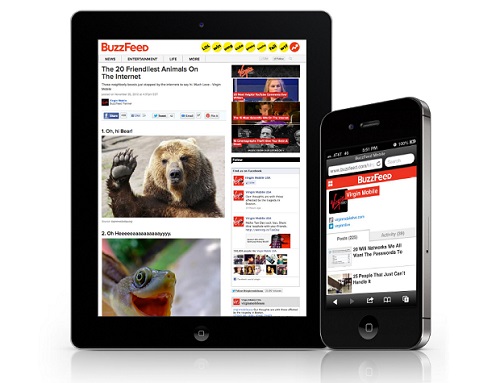How Buzzfeed Uses Email Marketing To Reach Their Audience
BuzzFeed is all about creating light-hearted and humorous stories that people want to share. Their content ranges in subject matter from cats to investigative reporting.
BuzzFeed makes a substantial investment in email marketing to distribute stories to their audience and grow the business. Their goal for nearly every email broadcast is to drive the audience back to the website where stories can be read and shared.
Most of us here in the office are avid BuzzFeed readers and have all subscribed to their newsletter. In this article we explore the inner workings of the brands email marketing and how they’re utilising this channel to improve their bottom line.
Their Database
When it comes to your consumer database, there is always room for growth. Dan Oshinsky, Director of Newsletters at BuzzFeed, has stated that collectively across all different emails the database grew by 1 million new subscribers in 2014. They will likely blow this number out of the water in 2015 as they continue to put effort into growing their database by converting website visitors to email subscribers.
Database Segmentation
Tailored and relevant content is at the heart of their email marketing program. Users receive emails based on their individual interests.
An effective tactic for achieving this is by allowing subscribers to self-segment up front by providing a list for them to choose from. BuzzFeed does this by giving their audience the option to opt-in to a list for each section of their website such as; Food, DIY, Animal.
It’s best to avoid generic subscribe boxes and rather provide opportunities for your audience to self-select the content they are interested in. From here marketers can segment their list and create email content that their audience will best respond to.
What Does A BuzzFeed Email Look Like?
BuzzFeed emails are exciting to read. Each email provides a lightweight summary of some of the best content on the site. The designs are image-heavy styles that are easy to scan. Although image heavy, BuzzFeed emails provide enough text so that readers can really get a feel for the story within the email, and make an informed decision about whether they want to click through to the website to continue reading.
Almost half of your audience will come from mobile and for this reason optimising your design and content for mobile is of paramount importance. BuzzFeed ensures all email content is responsive and well-structured for the various mobile devices.

Analytics
Email, and with all digital marketing, we have to test test test.
Studying your analytics and consumer behaviour such as whether people are opening campaigns, whether they are clicking them, what links they are clicking and so on is vital. With these insights marketers can make informed decisions as to how to optimise campaigns. Dan Oshinsky and his team use internal tools and popular analytics programs like Google analytics to determine what content is resonating best with subscribers. These insights are all factored into the decision making for future campaigns.
Are you a BuzzFeed fan? Have you subscribed to their newsletter? Tell us what you think of their email marketing efforts in the comments.




